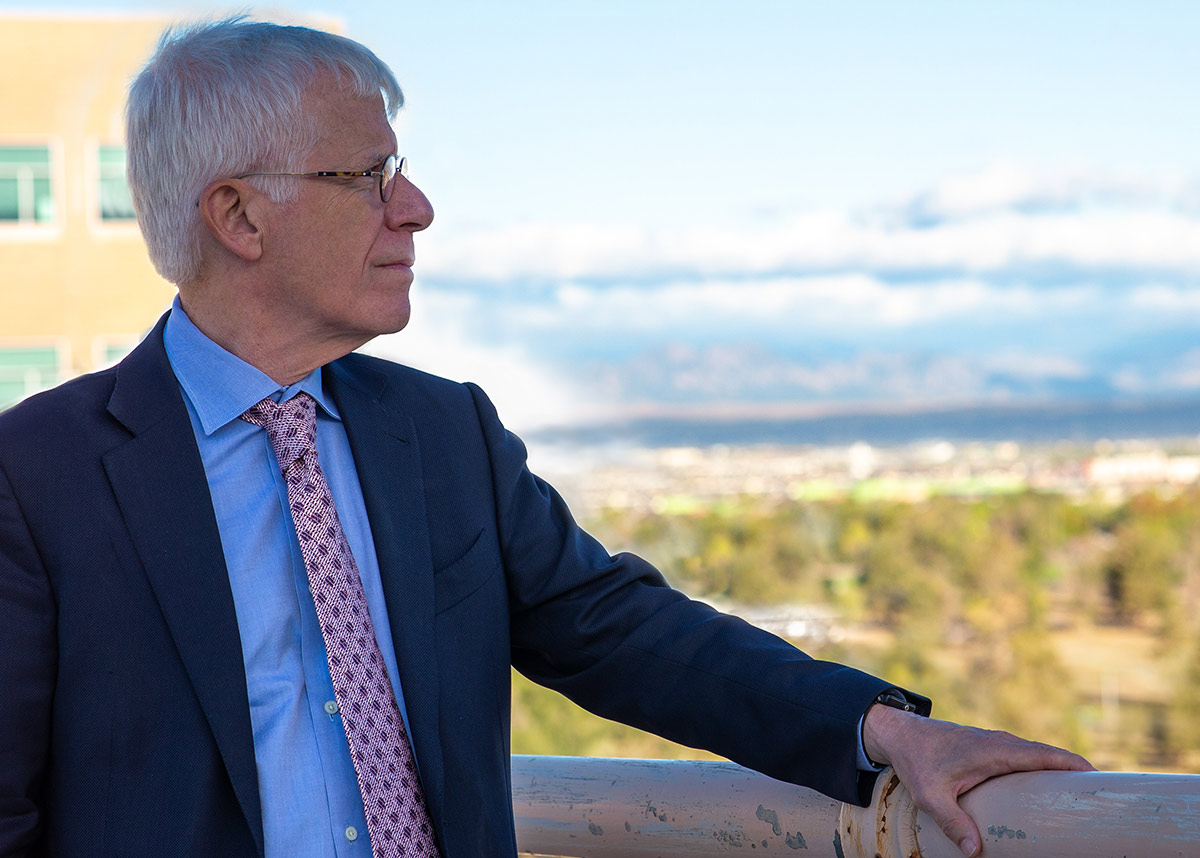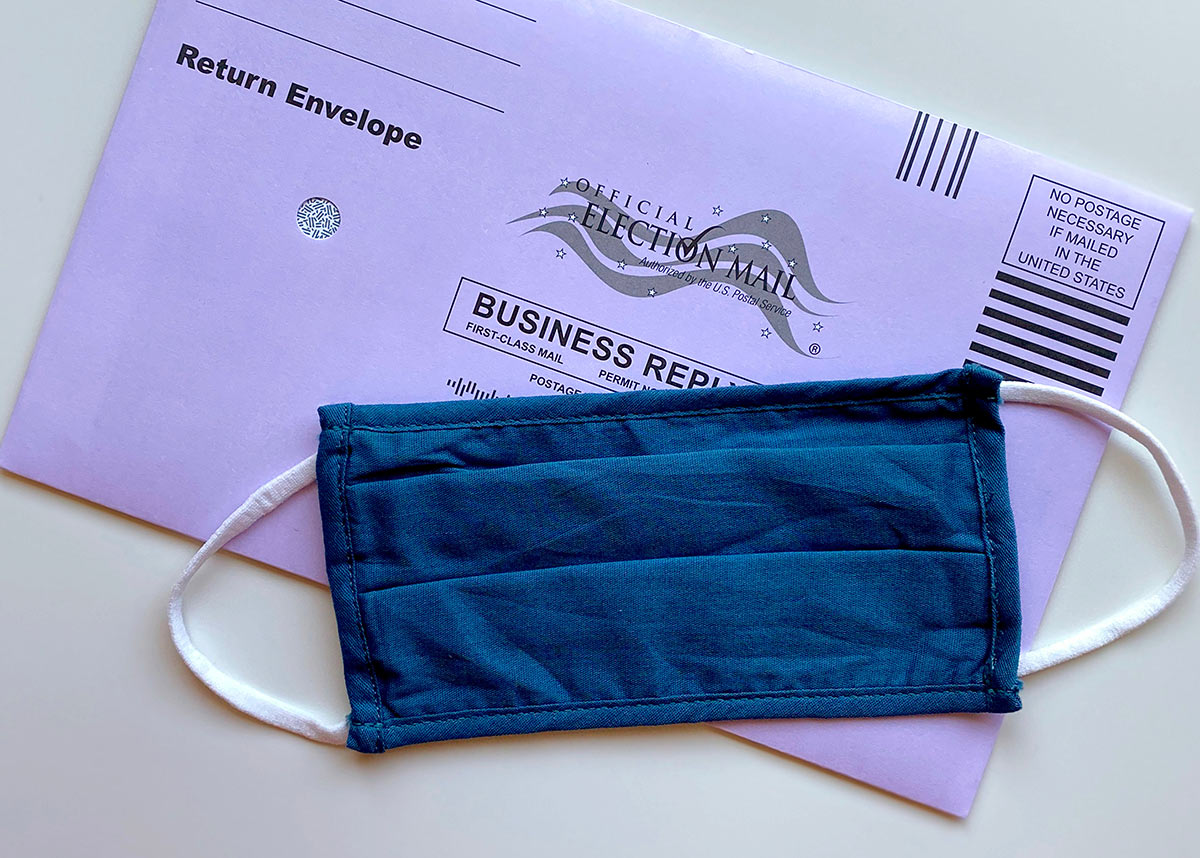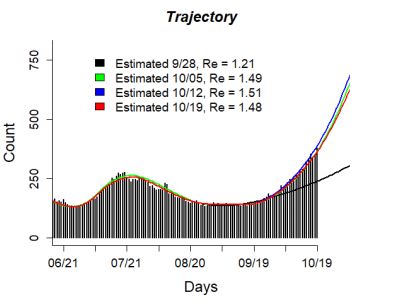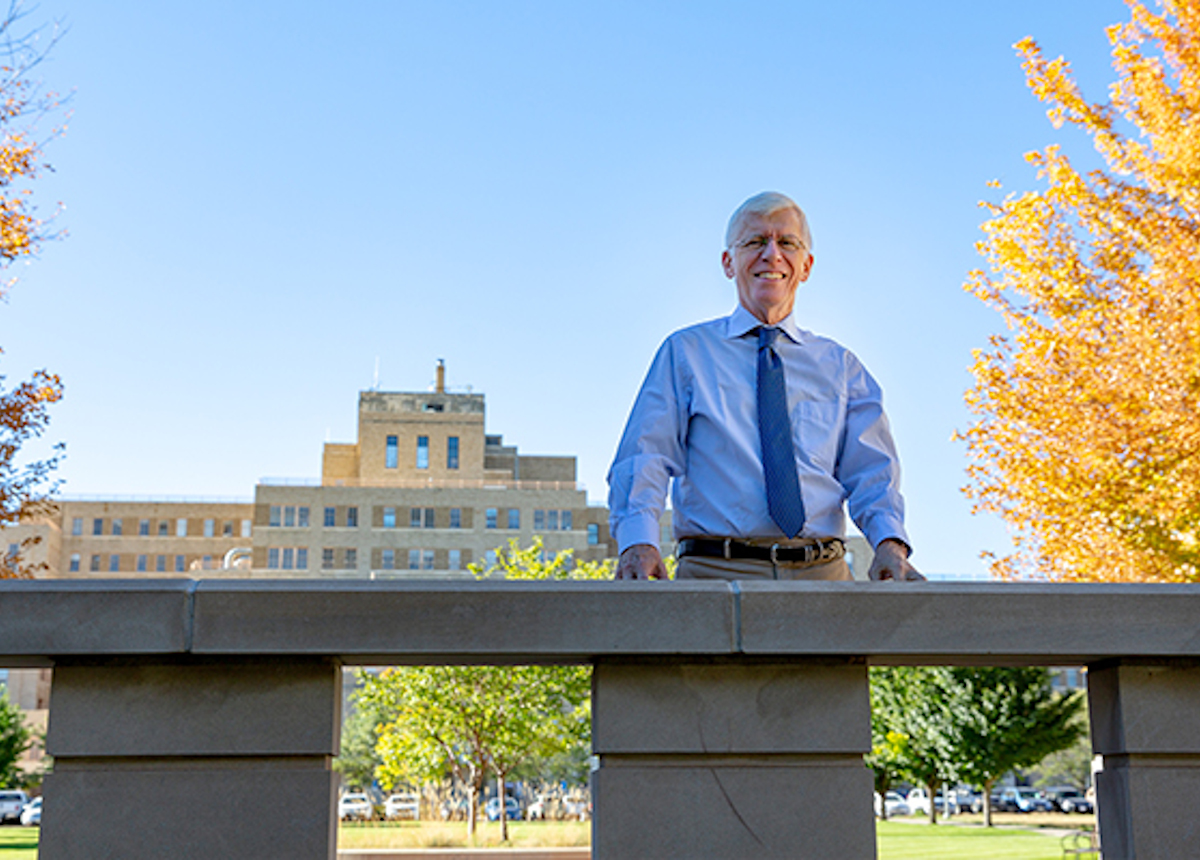Dean's COVID-19 Commentary
-

The COVID-19 Pandemic: The Thanksgiving holiday—looking backward and forward
Nov 30, 2020Last week’s 5-4 Supreme Court decision striking down New York Governor Cuomo’s restrictions on the size of religious gatherings has potentially significant implications for control of the pandemic. The majority opinion cited the First Amendment.Full story -

The COVID-19 Pandemic: Colorado's epidemic worsens & Thanksgiving and the December holidays loom
Nov 23, 2020Not surprisingly, reactions to calls for small and restricted Thanksgiving holiday gatherings have been mixed. A gathering via Zoom is a poor substitute for a shared meal, but far safer. With the anticipated availability of efficacious vaccines, next year’s holiday might be a return to normalcy.Full story -

The COVID-19 Pandemic: "If I Ran the Circus"
Nov 16, 2020No one is running the circus as every metric for the COVID-19 pandemic soars in most states and in Europe. In a vacuum of national coordination, state and local governments and their public health agencies are imposing ever more drastic measures. I summarize as follows: the virus has a plan, but we do not.Full story -

The COVID-19 Pandemic: Colorado's surge continues and Biden-Harris win the election
Nov 9, 2020The implications of the Biden-Harris victory for public health are profound. As the states continue to struggle with controlling the pandemic, cohesive coordination among the Administration and the national public health agencies will be beneficial.Full story -

The COVID-19 Pandemic: Colorado's surge continues and an election looms
Nov 2, 2020Writing on November 1, the topics for comment are numerous. Let’s start with the pandemic in Colorado. The latest modeling report from the COVID-19 modeling team provides a clear and certain projection; within the first two weeks of this month, the April peak of people hospitalized with COVID-19 (N=901) will be passed.Full story -

The COVID-19 Pandemic: The latest Colorado modeling results are troubling
Oct 26, 2020Quoting George Box, the British statistician once again: “All models are wrong, but some are useful.” The most recent updating of the core SEIR model (Susceptible-Exposed-Infected-Recovered) incorporates a single variable, termed “transmission control,” to capture success in reducing infectious contacts among Coloradans.Full story -

The COVID-19 Pandemic: Vaccination and therapeutics to the rescue, but when?
Oct 19, 2020Another worrisome week: the pandemic is surging across the United States and Europe; the Johnson and Johnson vaccine trial was halted because of a possible adverse event in a participant; Eli Lilly’s trial of a monoclonal antibody therapy was paused because of safety concerns; and remdesivir was found to be ineffective.Full story -

The COVID-19 Pandemic: A Potpourri
Oct 12, 2020Over the last week, there were further revelations about meddling by the Administration in public health measures proposed by the CDC, and specifically a requirement for universal wearing of masks in public commercial transportation, including airplanes.Full story -

The COVID-19 Pandemic: Deja vu all over again!
Oct 6, 2020The White House outbreak further emphasizes the public health significance of super-spreader events and the necessity for ongoing measures to guard against them.Full story -

The COVID-19 Pandemic: Education during the pandemic
Sep 28, 2020With many colleges and universities back in session for a month or more, the high incidence shift to younger ages continues. A New York Times survey shows a disturbing and worsening picture with more than 130,000 campus-related cases since the pandemic's start.Full story -

The COVID-19 Pandemic: "That Was the Week That Was"
Sep 21, 2020Trust is implicit as the nation turns to the CDC for health information and that trust has been continually eroded as the pandemic has played out.Full story -

The COVID-19 Pandemic: Education is remote, but the Colorado School of Public Health is not
Sep 15, 2020The fall semester has launched, but with remote instruction. We remain a school and a community, not a collection of online courses.Full story -
.jpg?sfvrsn=2c00fcb9_14)
The COVID-19 pandemic: Labor Day 2020 — Summer ends, winter begins, and worries continue
Sep 8, 2020This Labor Day stands alone: a pandemic is in progress; ash from the Cameron Fire falls in the backyard; and a pending swing from 100 degree high temperatures during recent days to a forecasted 70 degree drop with snow on the day after Labor Day. And there is more...Full story -

The COVID-19 pandemic: Why airborne transmission is important
Aug 31, 2020Last week, the NASEM held a two-day workshop on airborne transmission of SARS-CoV-2, a highly controversial topic with critical implications for strategies and policies directed at controlling the pandemic.Full story -

The COVID-19 pandemic: Time to reimagine public health?
Aug 24, 2020The imprint of the COVID-19 pandemic on public health (and all else) was immediate and will be lasting. Is this the time to start revisioning public health as we continue to contend with the pandemic and look to the future? I think so, and offer a viewpoint along with long-term colleagues in an article in the AJPH.Full story -

The COVID-19 pandemic: The epidemic smolders and Colorado burns
Aug 18, 2020Epidemics set their course. Our public health interventions purposefully alter that course with varying success, depending on the virulence of the infectious agent, the force of the measures taken and the public’s adherence to them. As K-12 schools, colleges and universities reopen, Colorado’s epidemic is smoldering.Full story -

Do tobacco smoking and SARS-CoV-2 team up?
Aug 3, 2020The global tobacco pandemic has been in progress for a century, dating to the 1913 release of Camel, the first mass-marketed cigarette brand. In the United States, the Surgeon General attributes 480,000 premature deaths annually to tobacco, a number greatly exceeding the current death toll from COVID-19 of over 150,000 deaths. But, this is a comparison that should not be made.Full story -
/lead-newsroom/kids-outdoors-instory-(1).jpg?sfvrsn=8d68c0b9_0)
COVID-19: Back to School?
Jul 27, 2020The rationale for reopening schools has been grounded in the inarguable direct benefits for children of being in school, and the indirect benefits of freeing parents for work and enhancing food security for children from impoverished families.Full story -

COVID-19: Vacation in the time of COVID-19
Jul 13, 2020This week, ColoradoSPH Dean Jonathan Samet talks from his vacation about the evolution of the COVID-19 pandemic in Colorado.Full story -

COVID-19: To mask or not to mask: why is that a question?
Jul 6, 2020This week, ColoradoSPH Dean Jonathan Samet breaks down the science and research behind wearing masks to prevent the transmission of COVID-19.Full story


